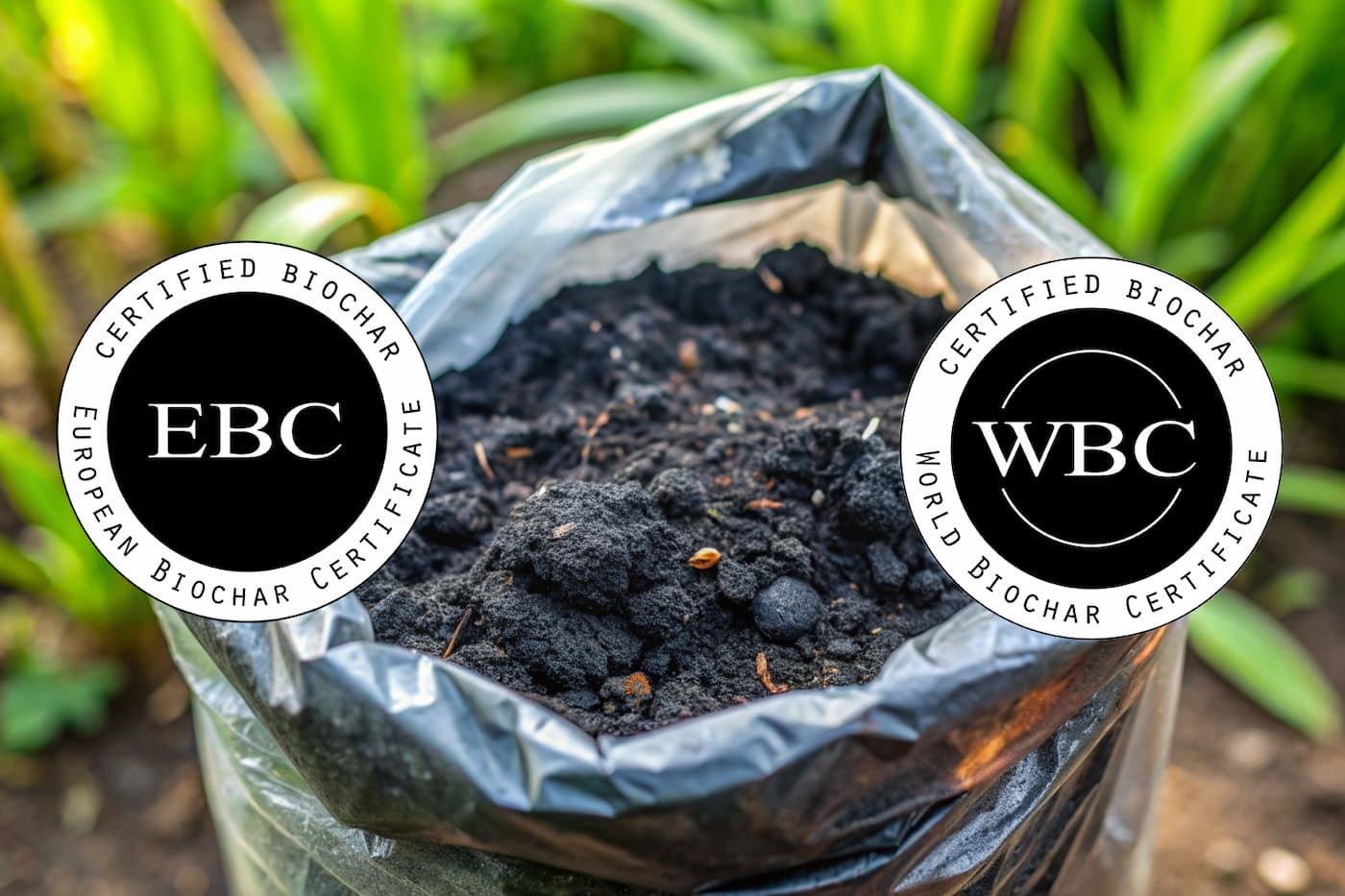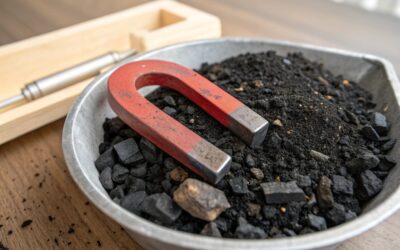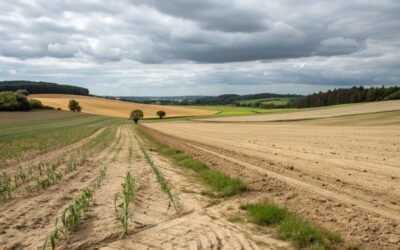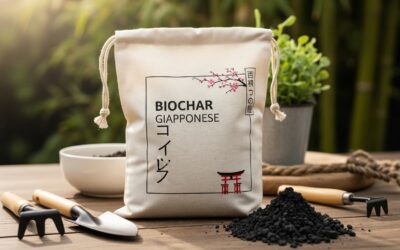Biochar is increasingly at the center of the debate on climate solutions and the circular economy. However, to fully understand its importance, we need to start with an alarming fact: according to the FAO, approximately 1.3 billion tons of food are wasted every year, a process that releases millions of tons of greenhouse gases.
In this context, biochar, produced by the pyrolysis of waste biomass, offers a unique value proposition: carbon sequestration, waste valorization, and soil regeneration. The key problem, however, is that not all biochar is created equal. Its effectiveness and, above all, its environmental and health safety depend on a rigorous and controlled production process.
To respond to this need for standardization and trust, the World Biochar Certificate (WBC) was born , a new and fundamental global certification.
Designed based on established scientific standards, it aims to ensure quality, sustainability, and credibility in a rapidly expanding market. But what makes the WBC so important and different from other standards? Let’s find out together.
Not just for Europe: Why the World Biochar Certificate (WBC) was born
The World Biochar Certificate (WBC) is not an isolated initiative, but the global evolution of an already established and well-regarded standard: the European Biochar Certificate (EBC) . Its developers recognized that, while the EBC was a model of scientific rigor, its applicability was limited. The EBC standard, in fact, incorporates specific requirements related to European legislation that are not always relevant or applicable to the diverse production and regulatory contexts of the rest of the world.
To overcome this limitation, the WBC was designed to maintain the same rigorous scientific quality and sustainability standards as the EBC, but removing the requirements strictly tied to European regulations. The concept has been effectively summarized:
WBC is the EBC for the globe
In practice, the WBC is valid worldwide, with the sole exception of the European Union and EFTA (European Free Trade Association) countries, where the EBC continues to be the reference standard to ensure full compliance with local laws.
Each Biochar Has Its Own Destiny: The 3 Certification Classes Explained Clearly
The WBC classifies biochar into three distinct categories to ensure that each type of waste biomass has a safe and appropriate valorization pathway. This division is essential for defining the most effective and safe possible application.
| Class | Suitable Raw Materials | Main Use | Keynote |
| WBC-Premium | Uncontaminated plant biomass. | All applications: agriculture, water treatment, composite materials, feed additive. | The highest quality class. For use as feed, producers require specific national licenses. |
| WBC-Agro | Wider range, including animal by-products (manure, digestate) and biosolids. | Safe applications in agriculture and soil. | Higher limits for heavy metals, but designed for soil protection. May be labeled as a micronutrient fertilizer (e.g., with high Zn or Cu levels). |
| WBC-Material | Any suitable biomass, including mixed waste (subject to approval). | Industrial uses and materials: concrete, asphalt, plastics, composites. Not suitable for soil use. | For B2B trade only, where proper handling is guaranteed to avoid risks (e.g. inhalation of dust). |
This three-tier system is strategically crucial: it creates specific and safe pathways for different raw materials – from virgin wood to biosolids – to enter the circular economy, maximizing resource utilization and rigorously controlling environmental risks.
Real-World Flexibility: The Strategic Rule of Heat Recovery
One of the most significant technical differences between WBC and EBC isn’t just a detail, but a key factor for global scalability. Like the European standard, the WBC requires biochar production to be energy and carbon efficient, with at least 70% waste heat recovery and utilization.
However, the WBC introduces a key exception that enables its widespread adoption. In cases where heat recovery is not technically or economically feasible, an exemption can be requested from Carbon Standards International. This flexibility is strategically designed to support both industrial and artisanal production, including:
• Mobile pyrolysis units , which treat residual biomass directly on site, often in areas without energy recovery infrastructure.
• Rural and small-scale projects , which promote decentralized and community-led development, vital for widespread diffusion.
• Simple, low-cost technologies , such as Kon-Tiki ovens, are key to local technology adoption.
This openness is not a derogation from sustainability, but a strategic enabler that makes the WBC a pragmatic and accessible standard, promoting biochar production even in the most challenging contexts and supporting bottom-up growth.
The Carbon Passport: The Link Between WBC and C-Sink
Biochar quality certification is not just a seal of guarantee on the product, but is the fundamental prerequisite for accessing the rapidly growing market of carbon dioxide removal (CDR) credits.
The link is direct and inseparable: to generate and register “carbon sinks” according to Carbon Standards International methodologies, biochar must first be certified according to a quality standard. Both WBC and EBC certifications are valid for registering stored carbon in the Global C-Sink Registry .
This transforms biochar from a simple soil improver to a monetizable climate asset, the market for which is experiencing explosive growth. Global companies such as Microsoft, Google, BCG, and JPMorgan are among the leading buyers of biochar carbon credits (Biochar Carbon Removal – BCR). The scale of this interest is impressive:
• BCR credit purchase volume increased from 69,300 tonnes in 2022 to a forecast of 1.6 million tonnes in 2025.
• BCR is by far the most purchased carbon removal method, with 290 unique purchasers , nearly five times more than the second most popular method.
These data demonstrate why the link between a quality certification such as the WBC and the generation of C-Sink is so strategically and financially important.
A Rigorous and Transparent Process: How to Obtain Certification
Obtaining WBC certification is a structured process that ensures rigor, transparency, and reliability. Here are the key steps:
1. Registration and Technical Pre-Audit The journey begins with registration and a technical pre-audit conducted by Carbon Standards International. This is not a mere formality, but a crucial collaborative phase in which the manufacturer’s pyrolysis technology and quality control plans are verified to be aligned with WBC requirements, prior to formal inspection.
2. Sampling and Analysis A representative sample must be taken for each production batch. This sample must be analyzed by an EBC/WBC accredited laboratory. Although these laboratories are currently located in Germany, Carbon Standards International is actively working to establish an international network of approved laboratories.
3. Annual On-Site Inspection Every year, an independent third-party body (currently, CERES-CERT AG) conducts an on-site inspection at the plant to verify the conformity of raw materials, processes, documentation, and quality management.
4. Traceability with QR Code Once it passes the controls, each batch of certified biochar receives a unique QR code. This code, accessible via the online portal, guarantees complete product traceability, allowing verification of the raw material’s origin, production conditions, and test results.
Conclusion: Ready to Unlock the Global Potential of Biochar?
The World Biochar Certificate is not just a label, but the critical infrastructure of trust and transparency needed to scale the biochar industry responsibly. It balances scientific rigor with pragmatic flexibility, creating a truly applicable global standard.
The WBC ensures that biochar, produced anywhere on the planet, is environmentally safe, effective in its applications, and credible for the carbon market.
The crucial question is no longer whether biochar can contribute to the climate challenge, but how quickly the global community will adopt frameworks like this to transform organic waste from a problem to a climate-positive asset.







